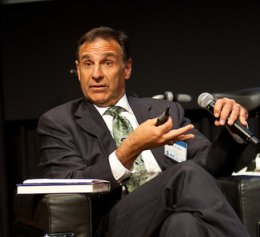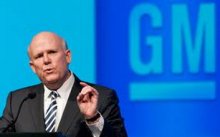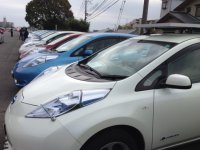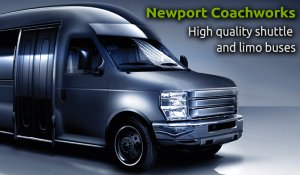 For Mike Calise, director of electric vehicles at Schneider Electric, mainstream adoption of plug-in electric vehicles boils down to widespread deployment of the charging infrastructure everywhere – homes, workplaces, retail stores, carsharing, car rental, and public sites. When asked about California’s recently enacted Electric Vehicle Charging Stations Open Access Act, Calise says he and his company support the open system for charging station access and payment. Calise says there are two larger issues to address than roaming – electric vehicle battery capacity and the number of charging stations out there.
For Mike Calise, director of electric vehicles at Schneider Electric, mainstream adoption of plug-in electric vehicles boils down to widespread deployment of the charging infrastructure everywhere – homes, workplaces, retail stores, carsharing, car rental, and public sites. When asked about California’s recently enacted Electric Vehicle Charging Stations Open Access Act, Calise says he and his company support the open system for charging station access and payment. Calise says there are two larger issues to address than roaming – electric vehicle battery capacity and the number of charging stations out there.
The company would also like to see European Union countries adopt a consistent charge and plug standard, as it varies by which country you’re charging in now. Schneider Electric, a global company specializing in energy management, has been very involved in charging station installations across the US and Europe. Prominent recent installations have included Caesars Entertainment Corp. at its northern Nevada Casino properties, Red Cross Silicon Valley Chapter, and the Hacienda Business Park in Pleasanton, Calif.
Hacienda Business Park serves Oracle, Kaiser, and Schneider Electric and offers an interesting example of a new business model using an electric vehicle car-sharing service. This collaboration between Schneider Electric, Toyota, City Carshare, and other business park tenants, allows employees at this location to commute to work by train and bike and have a rental car available for errands, lunch, and other short trips, through City CarShare, with the EVlink charging infrastructure from Schneider Electric.
Fleets that are bringing in plug-in electric vehicles and on-site charging stations are discovering a few key benefits of making the investment – one of them being strengthening employee retention, says Calise. “Drivers understand the benefits of EVs, including the dollar-cost benefits – and it gets replicated (among their peers),” he said.
Workplace charging is definitely an amenity – an employee perk – and has been part of several companies strengthening their images in the community, he said. “Installing a $10,000 charger, and having HOV lanes in certain states, has employees bragging about it and the company they work for,” he said.
EVlink is a complete electric vehicle charging solution that delivers flexible, safe, reliable, and compatible charging of electric vehicles. Schneider Electric’s EVlink charging stations are used in public and private locations such as residential, retail stores, restaurants, resorts/hotels, hospitals, office buildings, universities, apartment complexes, and destination centers.
In late September, Schneider Electric announced its “Charge the World Change the World” initiative, a philanthropic program to give EV drivers an opportunity to have a meaningful impact on global sustainability when purchasing an EV charger. For every EVlink home charging station sold in North America, Schneider Electric will donate a solar powered, battery operated LED lamp to a family without access to electricity. Here’s a video to share with others – for every 100 views of the video, Schneider Electric will donate another light to a family.






